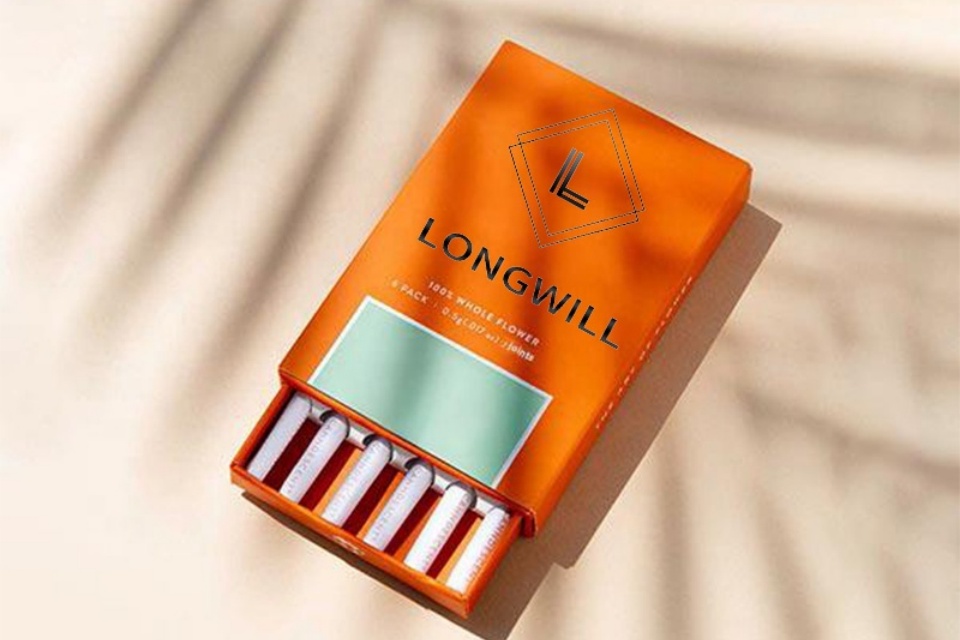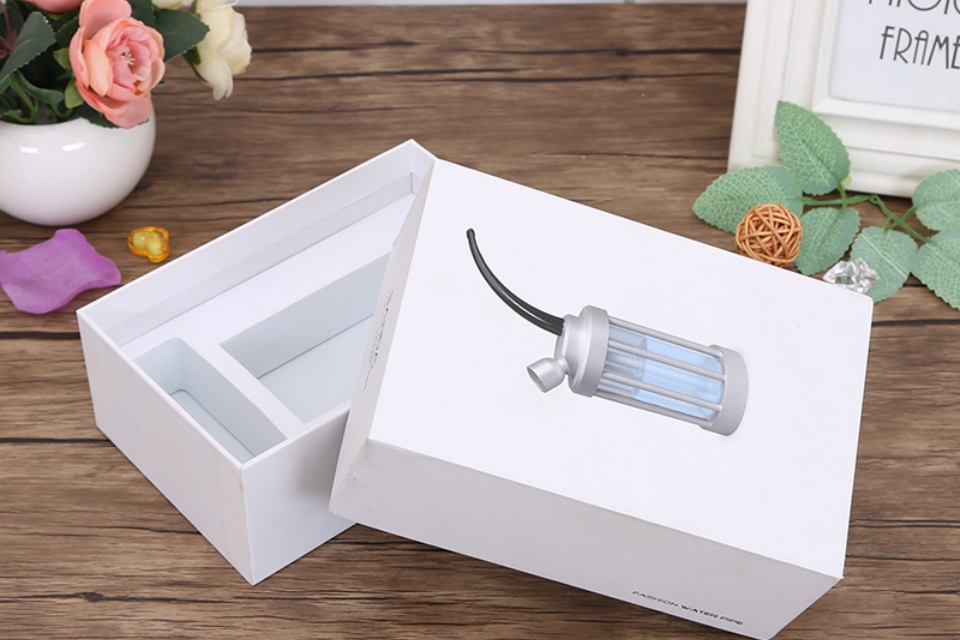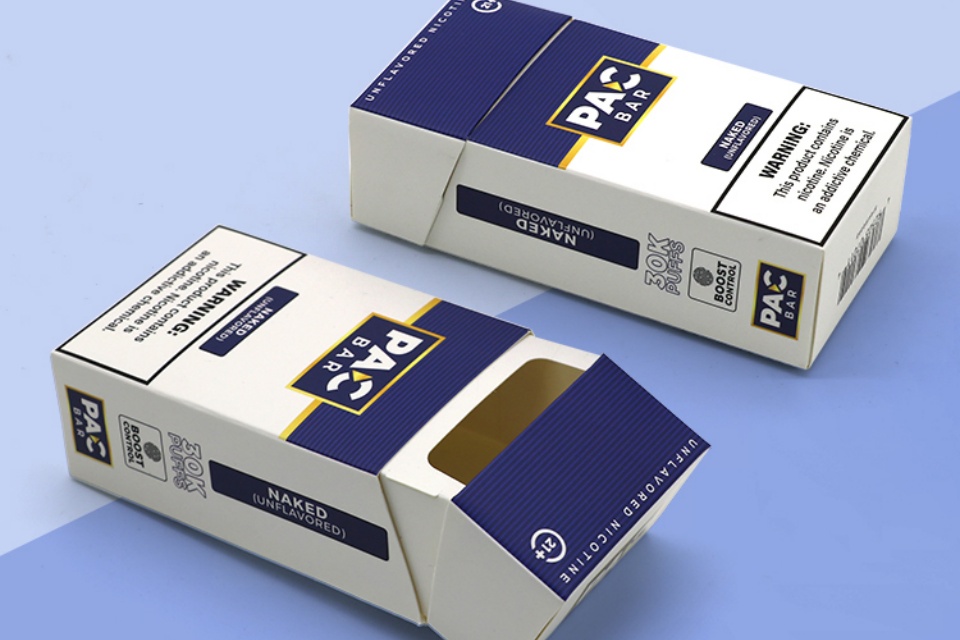Our News
Eco-Friendly Cannabis Packaging
Eco-Friendly Cannabis Packaging
Summary
Eco-friendly cannabis packaging refers to sustainable packaging solutions designed to minimize environmental impact while ensuring the integrity of cannabis products. This concept has gained significant traction within the cannabis industry as consumers increasingly prioritize sustainability in their purchasing decisions. With studies showing that up to 82% of consumers are willing to pay more for eco-friendly packaging, cannabis brands are motivated to adopt practices that align with both market demands and environmental responsibilities.
The notable types of eco-friendly cannabis packaging include biodegradable, compostable, reusable, and recyclable options. Biodegradable packaging, made from materials such as hemp-based plastics and cornstarch, decomposes naturally, reducing landfill waste and fossil fuel dependency. Compostable packaging, which transforms into organic matter in proper conditions, and reusable packaging, which encourages a circular economy through refillable designs, further promote sustainability. Recyclable materials, including post-consumer recycled plastics, contribute to reducing plastic pollution and supporting the circular economy.
Despite the environmental benefits, the shift to eco-friendly packaging is not without challenges. High upfront costs, compliance with varying regulations, and consumer education on proper disposal methods can hinder adoption. Moreover, cannabis companies must navigate a complex regulatory landscape that requires child-resistant and clear labeling, complicating the integration of sustainable materials. However, many brands have embraced innovative materials and technologies, such as mushroom packaging and smart labels, to enhance their sustainability credentials while addressing these challenges.
As the cannabis industry evolves, eco-friendly packaging is emerging as a critical factor for differentiation and consumer loyalty. Companies that successfully implement sustainable practices not only comply with increasing regulatory standards but also foster a positive brand image, ultimately contributing to broader environmental conservation efforts.
Types of Eco-friendly Packaging
Eco-friendly cannabis packaging encompasses a variety of materials and designs aimed at minimizing environmental impact while maintaining product integrity. The key types include biodegradable, compostable, reusable, and recyclable packaging options.
Biodegradable Packaging
Biodegradable packaging is made from natural materials that break down over time without leaving harmful residues. Common biodegradable materials in cannabis packaging include hemp-based plastics, cornstarch, and sugarcane extracts. These materials are more sustainable than traditional petroleum-based plastics, which contribute to climate change through fossil fuel extraction and processing. However, biodegradable packaging can pose challenges such as higher costs and the potential release of harmful chemicals during decomposition.
Compostable Packaging
Compostable packaging is designed to decompose into nutrient-rich organic matter in specific composting environments. This type of packaging must meet strict testing requirements to ensure it breaks down effectively without environmental toxicity. Hemp and other plant-based materials are often used for compostable cannabis packaging, providing an emerging solution for products like pre-rolls and edibles.
Reusable Packaging
Reusable packaging is gaining traction as brands aim to reduce single-use waste. This type of packaging can be refilled or repurposed, promoting a circular economy. Options include durable glass containers and high-quality plastics designed for multiple uses. Some cannabis companies have introduced refill programs to encourage consumers to return used containers, further reducing environmental impact.
Recyclable Packaging
Recyclable packaging utilizes materials that can be processed and reused, thereby diverting waste from landfills. Brands are increasingly adopting post-consumer recycled (PCR) plastics and ocean-reclaimed plastic as sustainable alternatives to traditional packaging. This approach not only enhances brand image but also helps to mitigate the effects of plastic pollution in marine environments.
Innovative Materials
Recent innovations in packaging materials include plant-based options such as mycelium, seaweed, and pulp from sustainably sourced bamboo or wood. These materials are designed to replace conventional plastic and offer durable, eco-friendly solutions for cannabis products. Furthermore, the integration of smart packaging technologies, such as digital labels, can streamline packaging processes while reducing material usage.
Benefits of Eco-friendly Cannabis Packaging
Eco-friendly cannabis packaging offers numerous advantages that align with the growing consumer demand for sustainable practices in various industries, particularly in the cannabis market.
Environmental Impact
One of the most significant benefits of sustainable cannabis packaging is its ability to reduce environmental waste and lower carbon footprints. Traditional single-use plastics, due to their non-biodegradable nature and fossil fuel-intensive production processes, contribute substantially to greenhouse gas emissions and pollution in landfills and natural environments. In contrast, eco-friendly materials like biodegradable plastics, paper, and hemp blends minimize these impacts by utilizing renewable resources and promoting a circular economy through recyclability and compostability.
Consumer Appeal and Brand Loyalty
Consumers today are increasingly concerned about the environmental impact of the products they purchase. Research indicates that 82% of consumers are willing to pay more for sustainable packaging, with younger demographics, such as Gen Z, showing the highest willingness at 90%. By aligning packaging practices with consumer values, cannabis brands can foster brand loyalty, improve customer retention, and differentiate themselves in a crowded marketplace. A strong emotional connection forms between customers and brands that demonstrate commitment to sustainability, leading to increased advocacy and repeat business.
Regulatory Compliance
Sustainable packaging also helps cannabis businesses comply with environmental regulations while enhancing their brand image. As environmental standards become more stringent, adopting eco-friendly practices can position companies as responsible and socially-conscious players in the market. This compliance not only avoids potential legal issues but also bolsters public perception, particularly in the cannabis industry, where a green ethos is highly valued.
Cost Efficiency
Another benefit is the potential for cost savings. Bioplastics and other sustainable materials often require fewer resources for production and can lead to lower shipping costs due to their lighter weight and quicker decomposition rates compared to traditional plastics. These savings can be significant, especially for brands focused on reducing their overall environmental impact while maintaining profitability.
Enhanced Product Preservation
Many sustainable packaging solutions, such as glass jars, not only provide an eco-friendly alternative but also preserve the freshness and potency of cannabis products. By utilizing high-quality materials that can be easily recycled or reused, brands can enhance the overall consumer experience while minimizing waste.
Regulations and Standards
Cannabis packaging is governed by a complex set of regulations and standards aimed at ensuring consumer safety, environmental sustainability, and product integrity. In the United States, both federal and state laws regulate cannabis packaging, leading to a patchwork of requirements that businesses must navigate effectively. Key regulatory bodies, including the Food and Drug Administration (FDA) and the Drug Enforcement Administration (DEA), impose strict packaging standards, necessitating child-resistant, opaque, and clearly labeled packaging to prevent accidental ingestion by minors.
Environmental Sustainability in Regulations
Recent shifts towards sustainability have introduced additional regulatory requirements focused on minimizing the environmental impact of cannabis packaging. In states like New York, the Office of Cannabis Management has implemented regulations aimed at promoting environmental sustainability in the cannabis sector, aligning with the State's Climate Leadership and Community Protection Act (CLCPA). These regulations address energy use, waste management, and emissions, thereby reinforcing economic, environmental, and social sustainability.
Focus on Biodegradable and Eco-friendly Materials
Emerging sustainability policies and growing consumer demand for eco-friendly solutions are significantly influencing the development of biodegradable packaging materials within the cannabis market. As companies face pressure to adopt greener practices, many are exploring the use of materials that meet both regulatory requirements and consumer expectations for sustainability. Additionally, compliance with certification programs such as the Forest Stewardship Council (FSC) and the Sustainable Forestry Initiative (SFI) can enhance a brand's reputation and commitment to environmental stewardship.
Challenges in Compliance
The need to adhere to varying regulations at different levels can complicate the development of a consistent packaging strategy across state lines. Businesses often find it challenging to maintain compliance while innovating sustainably due to the intricate nature of cannabis laws and standards. To build trust with environmentally conscious consumers, companies are increasingly seeking third-party certifications that validate their sustainable practices, helping them stand out in a crowded market.
Challenges in Adoption
The transition to eco-friendly cannabis packaging presents several challenges that companies must navigate. One significant hurdle is the higher upfront costs associated with sustainable packaging materials compared to traditional options, which can deter some businesses from making the switch. Despite these costs, sustainable solutions may offer long-term benefits, such as enhanced brand positioning and potential cost savings in waste disposal.
Another challenge lies in the complexity of compliance with varying state and federal regulations regarding packaging. Companies must ensure that their eco-friendly packaging meets stringent safety standards while also being child-resistant and compliant with legal requirements. This patchwork of regulations can make it difficult for multi-state operators to maintain a consistent packaging strategy across different markets.
Additionally, there is a need for consumer education regarding sustainable packaging practices. Many consumers are unaware of proper disposal methods for eco-friendly materials, which can hinder the overall effectiveness of sustainability initiatives. Companies can address this by incorporating clear instructions on labels or websites to inform consumers about recycling and composting options.
Lastly, the cannabis industry must also confront the challenge of creating packaging that not only meets environmental standards but also stands out on dispensary shelves. With increasing competition, brands are pressured to develop unique and visually appealing packaging designs that resonate with eco-conscious consumers while maintaining regulatory compliance. Balancing these needs presents a complex challenge for brands looking to adopt sustainable packaging solutions in an evolving market.
Innovative Strategies and Solutions
In recent years, the cannabis industry has witnessed a significant shift towards eco-friendly packaging solutions, driven by consumer demand for sustainable practices and regulatory requirements. Companies are increasingly adopting innovative materials and designs that minimize environmental impact while maintaining product integrity.
Sustainable Material Choices
Many brands are embracing biodegradable and compostable materials as alternatives to traditional plastic packaging. Hemp-based plastics, for example, are gaining popularity due to their biodegradable nature and reduced energy consumption in production compared to petroleum-based plastics. Additionally, other innovative materials such as mushroom packaging and plant-based PLA (polylactic acid) are being explored for their sustainability credentials.
Advancements in Packaging Technology
Recycled materials, particularly post-consumer recycled (PCR) plastics, are also becoming a staple in eco-friendly cannabis packaging. By utilizing PCR content, companies can significantly reduce their carbon footprint and contribute to a circular economy. This trend is further supported by regulations in places like New York, which mandate the use of at least 25% post-recycled consumer content in cannabis packaging.
The emergence of smart packaging technology represents another innovative approach to sustainable packaging in the cannabis industry. This includes the incorporation of QR codes on packaging, which provide consumers with information about recycling and disposal methods. Such technology enhances consumer education and promotes responsible disposal practices, addressing the common issue of improper waste management associated with traditional packaging.
Edible packaging is another novel concept that has started to take root within the industry. Though still niche, the idea of creating packaging that can be consumed alongside the product demonstrates the potential for creativity and innovation in cannabis packaging.
Collaborative Approaches to Sustainability
Successful implementation of eco-friendly packaging solutions often requires collaboration between brands, suppliers, and consumers. Companies must educate themselves on sustainable practices and work creatively within their budgets to accommodate the potentially higher costs of sustainable materials. Moreover, clear communication of disposal instructions on labels and websites can further engage consumers in sustainability efforts.
Ultimately, by investing in innovative and sustainable packaging strategies, cannabis brands not only attract environmentally conscious consumers but also position themselves competitively in a rapidly evolving market. As the industry continues to adapt, those who prioritize sustainability are likely to reap long-term rewards, fostering brand loyalty and contributing to a healthier planet.
Case Studies
In recent years, several cannabis companies have emerged as leaders in the pursuit of sustainable packaging solutions. These case studies highlight innovative approaches that not only meet regulatory standards but also resonate with environmentally conscious consumers.
Freedom Cannabis
Freedom Cannabis, based in Acheson, Alberta, has positioned itself as a pioneer in sustainable practices within the cannabis industry. The company has introduced 100% recyclable tins for its recreational cannabis line, emphasizing both environmental sustainability and product quality. These tins, developed in partnership with Canadian firm Nitrotin, are designed to prevent oxidation and maintain the flavor and fragrance of cannabis. Troy Dezwart, the executive director and co-founder of Freedom Cannabis, stated, “Our mandate has always been to be a leader in sustainability in this industry,” underlining their commitment to high-quality and eco-friendly packaging solutions.
Climate Neutral Certified Brands
Several cannabis companies have taken significant steps towards sustainability by achieving Climate Neutral Certification. This certification reflects a comprehensive approach to reducing their carbon footprint. For example, these brands have implemented measures such as using 100% biodegradable cartons and fully recyclable metal tins. Additionally, they are engaging in regenerative farming practices that promote soil health and biodiversity, while also pledging to achieve net-zero carbon emissions by 2040.
Innovative Materials
The use of innovative materials in cannabis packaging has also gained traction. Industry experts advocate for non-petroleum-based packaging materials such as hemp-based polymers, mycelium, and seaweed, which are both sustainable and effective. These materials not only align with eco-friendly practices but also reduce waste and environmental impact. Raphael Wechsler, a sustainability expert, emphasizes the importance of focusing on materials that are grown rather than extracted, which can lead to a more sustainable packaging lifecycle.
Consumer Engagement
Research indicates that consumers are increasingly willing to pay a premium for products that align with their values, particularly regarding sustainability. Data from the Brightfield Group reveals that 69% of cannabis consumers often purchase products with sustainable packaging, significantly surpassing the general population's average. This trend presents a unique opportunity for cannabis companies to innovate and create cost-effective sustainable packaging solutions that attract environmentally conscious consumers.
These case studies collectively illustrate the potential for eco-friendly cannabis packaging to drive brand loyalty and market differentiation while contributing positively to environmental conservation efforts.
Future Trends
The future of eco-friendly cannabis packaging is poised for significant transformation, driven by technological advancements and growing consumer demand for sustainability. One prominent trend is the integration of augmented reality (AR) technology, which allows consumers to interact with packaging through their smartphones, enhancing their shopping experience with informative and engaging content related to the product. This shift not only aims to captivate consumers but also to provide them with crucial product information, which is particularly important in the cannabis industry where regulations and consumer education are paramount.
In addition to technological innovations, the development of sustainable materials continues to shape the cannabis packaging landscape. As environmental concerns rise, brands are increasingly adopting biodegradable and compostable materials such as hemp, cornstarch, and recycled paper. These materials not only reduce the long-term environmental footprint but also align with consumer preferences for eco-friendly solutions, as studies show that a significant majority of consumers are willing to pay more for sustainable packaging options.
Moreover, regulatory trends are likely to influence packaging choices. The federal shift towards legalization could lead to standardized packaging regulations across states, thereby simplifying compliance for companies and enabling them to innovate more freely. However, companies must remain vigilant about adapting to local regulations and consumer preferences, which are increasingly leaning towards sustainability. This is evidenced by a substantial percentage of consumers—particularly Gen Z—prioritizing brands that demonstrate a commitment to environmentally responsible practices.
Ultimately, the future of cannabis packaging will not only focus on regulatory compliance and aesthetic appeal but will also emphasize the importance of sustainability. Brands that proactively embrace eco-friendly practices and materials are likely to enhance their reputation, foster customer loyalty, and contribute positively to the environment, establishing themselves as leaders in this rapidly evolving market.
Categories
Latest News
Contact Us
Contact: Aaron Lee
Phone: +8613570866244
Tel: +8675529490260
Add: Li Songlang 2nd Industrial Zone,No.18,FengTang Rd,Guangming New District


